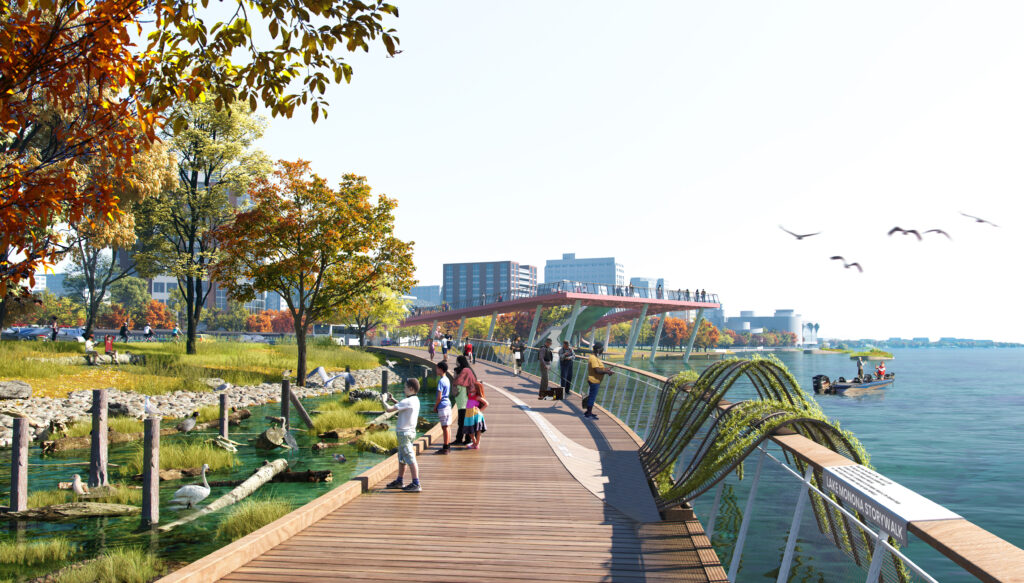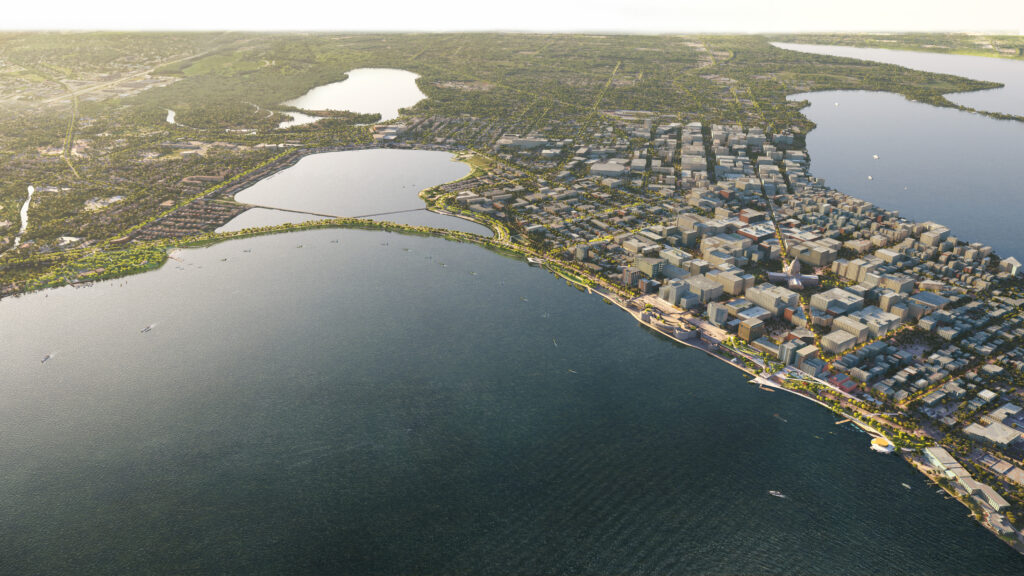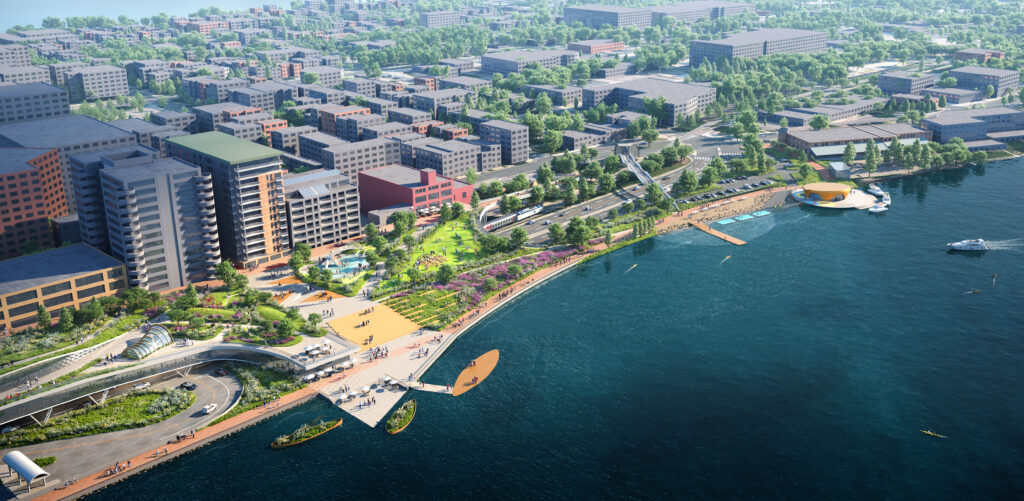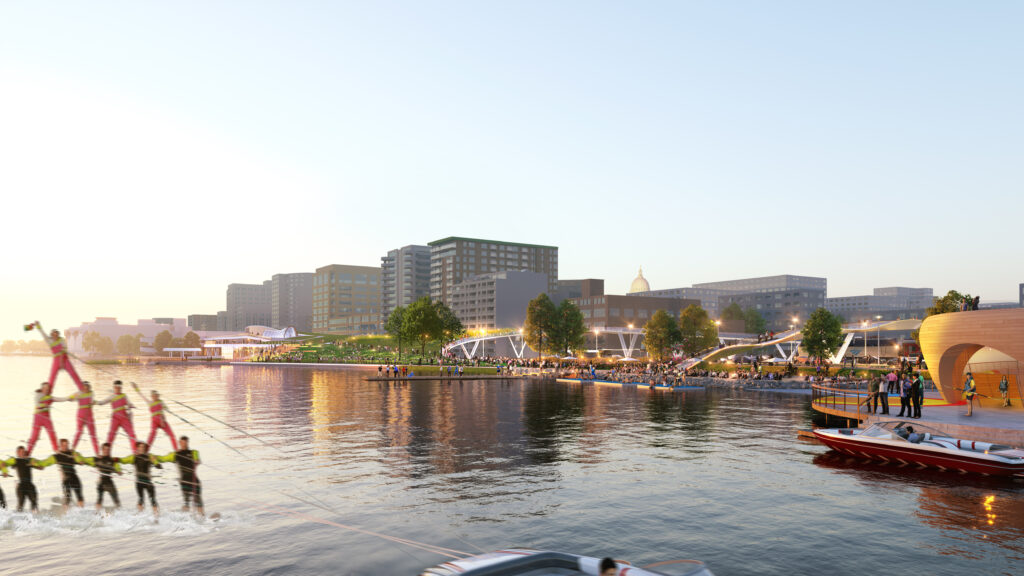Designers offer ambitious concepts for remaking Madison's Lake Monona waterfront
GRAEF is proud to partner with Sasaki on this historic design competition.
Three renowned design teams are offering ambitious plans to reimagine the Lake Monona Waterfront between Olin Park and Williamson Street.
The three finalists in a city design competition — Agency Landscape + Planning of Cambridge, Massachusetts; James Corner Field Operations of New York; and Sasaki of Denver — are proposing common themes like ecological restoration of the lake edge while offering starkly different ideas to dramatically transform the heavily used but bland lakefront into a destination for both visitors and residents.
“I am excited that Madisonians will get to see the presentations from the three design teams,” Mayor Satya Rhodes-Conway said. “It is a chance to envision a new waterfront and tell the city what elements they think are most important.”
“I am excited that we are at this point,” city parks superintendent Eric Knepp said. “Each design demonstrates a vision for this public space that improves the experience at a human scale. “They each have thoughtful approaches to improving access and addressing the grade separation between Downtown and the lakeshore. They each demonstrate the community’s desire to see the space utilized in a variety of ways.”
‘Voices of the Lake’
Sasaki’s plan, “Voices of the Lake,” would emphasize an ecologically vibrant lakefront with green infrastructure like raingardens and wetlands and seek to create stronger connections between the lake and Downtown and nearby neighborhoods with improved intersections, widened walking paths and separated bike lanes.
The plan features a “story walk” with elements like sidewalk graphics and quotes on walls along the project site’s four districts.
“Law Park Ledge,” to the east of Monona Terrace, would include a new park over John Nolen Drive with amphitheater, boat house and community center, restaurant, outdoor event space, beach and swimming.
“Lake Lounge,” to the west of the convention center, would showcase the lake edge with new areas for food trucks and a new bridge system to the state Capitol. The “Community Causeway” seeks to make John Nolen Drive safer for pedestrians by reducing traffic speed and improving bike and pedestrian crossings while using raingardens and wetlands to clean stormwater coming from the roadway.
“Olin Overlook” features a nature center, a raised boardwalk, additional trees and wildflower plantings, an interpretive nature trail and vistas of the city’s skyline.
“I am very pleased that each of the teams created designs that were responsive to the direction provided by the city and Ad Hoc Committee through the process to date,” Knepp said. “The designs will certainly spark dialogue and conversation about how we should move forward.”
The Lake Monona Waterfront Project is tied to the city’s transformation of a two-story building and 3.65 acres of shoreline next to Olin Park, purchased by the city in 2019, into a community amenity with Parks Division offices; the reconstruction of John Nolen Drive, slated for 2026; and creation of a “Destination District” around the Alliant Energy Center, aimed at connecting the South Side to the lake and Downtown.
“The Lake Monona Waterfront Master Plan will guide the design and development of this part of the lakefront for decades to come, so it’s important that we get good feedback now about how to make the waterfront accessible to our whole community,” Rhodes-Conway said.







